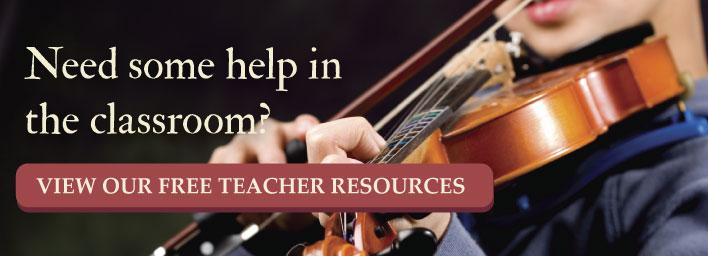
 When teaching music to students, the most basic elements are classified under either timing or pitch. However, the way those elements are combined dictates the overall impression the music creates, known as form. Form is present in every piece of music. It is the comprehensive structure that orchestrates the general idea conveyed, by the specific way the elements interact.
When teaching music to students, the most basic elements are classified under either timing or pitch. However, the way those elements are combined dictates the overall impression the music creates, known as form. Form is present in every piece of music. It is the comprehensive structure that orchestrates the general idea conveyed, by the specific way the elements interact.
Although anyone can appreciate and enjoy music without being able to identify the form, students who are interested in playing, composing, or studying music history must learn to recognize the form of a piece of music. Understanding form will not only help them deliver better musical performances, it will increase their listening enjoyment.
Basic Concept and Definition
Form is everywhere you look. For instance, you can recognize the form of a cat or a starfish easily upon sight; and if you see a wild lynx without knowing exactly what it is, because you are familiar with the form of a cat, you know that the animal is related in some way. However, some forms look deceptively simple. If you look at a forest from a great distance, it appears unified. Yet, when you start to explore it closer you’ll see that it is really a complex group of organisms working together in a delicate balance.
Likewise, music forms can offer amazing complexity or relative simplicity, but learning how to label (with letters) or name common forms of music is a key element in music education.
Activities
Since many people have a good idea about how popular music is arranged—the form used—these activities will build on that familiarity. It’s a good idea to refresh your students’ memories about melodic phrases and how they are identified.
Labeling with Letters
Materials: Depending on the age group and aptitude of your students, you’ll need to gather recordings (and sheet music) for various different musical forms. Some ideas include a typical (sing-able) nursery rhymes, traditional hymns or other folk songs that excludes refrains, and current (or well-known) pop songs.
Procedure: Begin by making a correlation to poetry. Explain to your students that identifying the form of a piece of music is much like labeling the rhyme scheme in a poem (e.g. aabb, abab, abcd); different sections can be labeled using upper case letters and apostrophes to indicate prmes. Play your examples, having the students listen for:
- Verses—same melody, different words
- Refrains—same melody (although different from the verse), same words repeated
- Bridge—new melody with alternate chord progression that appears later in the song, usually after the second verse and second refrain. It typically is only added once, but sometimes twice and leads back into the refrain
- Instrumental—these parts are without vocals
While discussing the piece, direct the conversation by asking open ended questions. For example, does the piece have any of these items? Where do you notice the changes? Do the instrumental parts feature the same melody as the verses or the refrain? How are they different?
Now have your students label the music using letters for each part, adding accent marks if the part is noticeably different than its companion (multiple A section form, etc.).
Naming Common Musical Forms
Materials: You’ll need to gather music that displays the forms you want to cover with your class and create a worksheet that students can use to list the pieces according to their common form.
Procedures: Build on the previous lesson by explaining that very often, music is classified by a form “name” that has become accepted over time. Demonstrate this by explaining that the nursery rhyme is a good example of “theme and variations,” a musical piece that is much different from rondo, which follows the typical form for a pop song. Play a good selection of musical pieces that cover the forms you’ve introduced. Depending on the age group of your students, you may want to intensify this activity by including Jazz standard, ternary, dance, and sonata forms.
Further Discussion Ideas
With your older students, or those who are interested in composition, you can help reinforce the importance of form by discussing why certain sections were added and the overall impression created by the various forms. For example, what is the purpose of a refrain? What sort of impact does the slight changes to a verse do to the overall impression of the music? These questions will help solidify the purpose of form so that they will be able to translate that knowledge into their own compositions.
Teaching form to music students provides them with clear connections on how the elements of timing and pitch combine to create music.

